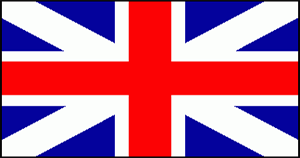War of 1812 Battles |
Colonial Wars |
American Wars |
Battle of Fort Bowyer
February 11, 1815, Mobile, Alabama (Mississippi Territory)
 |
|||||||||||||||||||||
|
After the battle of New Orleans, Gen. John Lambert and Adm. Cochrane looked over what was left of the British force. One third of their infantry and 3 out of 4 major generals were casualties. Supplies of food and ammuinition were extremely low. Lambert decided to withdraw his remaining troops while he still could.
The British withdrawal was handled with dicision and skill. The work parties built roads through swamps and 16 bridges over creeks and gullies. Between January 8-18, the heavy guns, ammunition, supplies and wounded were gradually evacuated. All of these movements went unknown to the Americans, who remained uncertain about what the British intented to do. Maj. Gen. Andrew Jackson failed to maintain contact with the British. He was content with bombarding the British camp from time to time. The last British outpost withdrew on January 18, at about 3:00 A.M. and replaced their sentries with uniformed dummies.
By noon on January 19, 4,700 men had safely encamped after the bridges had been destroyed.
Lambert decided to land his force on Dauphin Island to reorganize, this however required the British to capture Fort Boyer. Jackson had strengthened Fort Boyer and in his words "ten thousand men cannot take it".
Lt. Col. William Lawrence was in command of the American fort. It had a total of 22 guns, 3 of them were 32-pounders. It was garrisoned by a total of 370 officers and men.
The British moved to take the fort. Their intelligence was correct, meaning that the fort could not withstand a regular siege. On February 8, Lambert landed about 1,000 men east of the fort to block any reinforcements by land. The British moved to within 200 yards of the fort and began to dig their siegeworks. The Americans fired at them, killing about 10 men, but the British continued to work.
After the siegeworks were completed, the British gunners had: four 18-pounders, two 8-inch howitzers, two 6-pounder rockets, three 5 1/2-inch and two 4.4-inch mortars, and a hundred 12-pounder rockets.
Everything was ready for the British to bombard the fort. Once they began, the crowded fort would become a slaughterhouse. Lambert summoned the fort to surrender, offering to let the women and children leave before they opened fire.
Lawrence did not sent a force to stop the British from setting up their siegeworks because he was greatly outnumbered. To stop what would be nothing more than the slaughter of his men, he surrendered the fort on February 12. Thereafter, military etiquette took over, hostages were exchanged, the British flag was raised over the fort, and it's gate was occupied by a company of British infantry. The next morning, the Americans marched out of the fort with the honors of war. American losses, if any had been few. The British had about 25 casualties.
With Mobile Bay secured with British warships and Fort Boyer in British control, the Americans hurried back to Mobile. They faced the prospect of having to face a heavy British attack. However, on February 13, a British dispatch ship arrived off Mobile Bay with notice that the United States and England had signed a peace treaty, the Treary of Ghent, on Christmas Eve, December 24.
The battle of New Orleans and the taking of Fort Boyer should not have been fought, but news took to long to reach the opposing armies to tell them the war was over. News of peace arrives two days later, Fort Bowyer returned to American control
